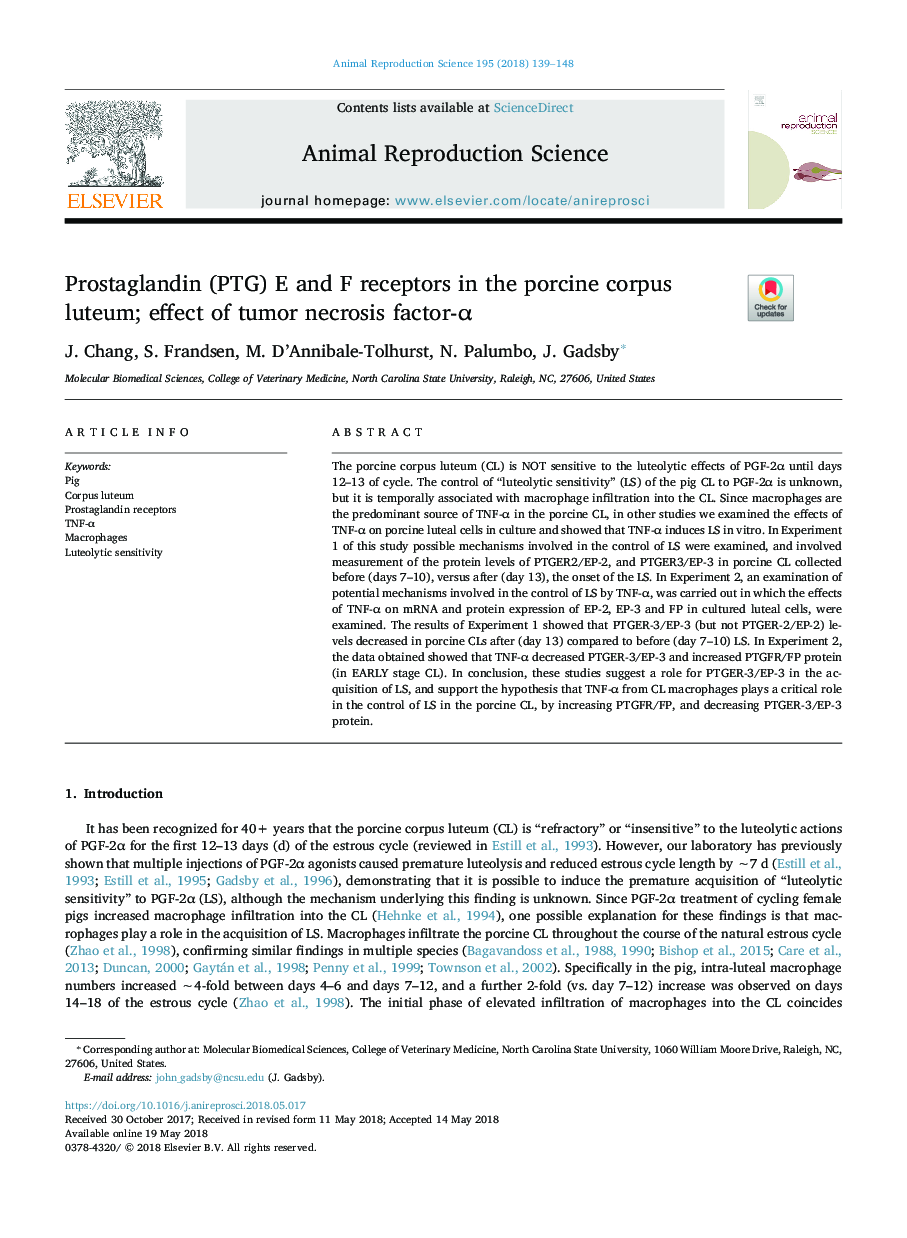| Article ID | Journal | Published Year | Pages | File Type |
|---|---|---|---|---|
| 8403796 | Animal Reproduction Science | 2018 | 10 Pages |
Abstract
The porcine corpus luteum (CL) is NOT sensitive to the luteolytic effects of PGF-2α until days 12-13 of cycle. The control of “luteolytic sensitivity” (LS) of the pig CL to PGF-2α is unknown, but it is temporally associated with macrophage infiltration into the CL. Since macrophages are the predominant source of TNF-α in the porcine CL, in other studies we examined the effects of TNF-α on porcine luteal cells in culture and showed that TNF-α induces LS in vitro. In Experiment 1 of this study possible mechanisms involved in the control of LS were examined, and involved measurement of the protein levels of PTGER2/EP-2, and PTGER3/EP-3 in porcine CL collected before (days 7-10), versus after (day 13), the onset of the LS. In Experiment 2, an examination of potential mechanisms involved in the control of LS by TNF-α, was carried out in which the effects of TNF-α on mRNA and protein expression of EP-2, EP-3 and FP in cultured luteal cells, were examined. The results of Experiment 1 showed that PTGER-3/EP-3 (but not PTGER-2/EP-2) levels decreased in porcine CLs after (day 13) compared to before (day 7-10) LS. In Experiment 2, the data obtained showed that TNF-α decreased PTGER-3/EP-3 and increased PTGFR/FP protein (in EARLY stage CL). In conclusion, these studies suggest a role for PTGER-3/EP-3 in the acquisition of LS, and support the hypothesis that TNF-α from CL macrophages plays a critical role in the control of LS in the porcine CL, by increasing PTGFR/FP, and decreasing PTGER-3/EP-3 protein.
Related Topics
Life Sciences
Agricultural and Biological Sciences
Animal Science and Zoology
Authors
J. Chang, S. Frandsen, M. D'Annibale-Tolhurst, N. Palumbo, J. Gadsby,
